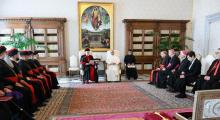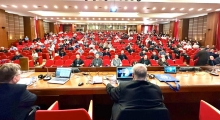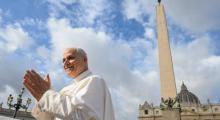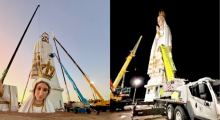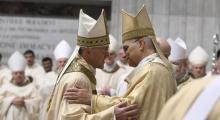Issued by the Catholic Center for Studies and Media - Jordan. Editor-in-chief Fr. Rif'at Bader - موقع أبونا abouna.org
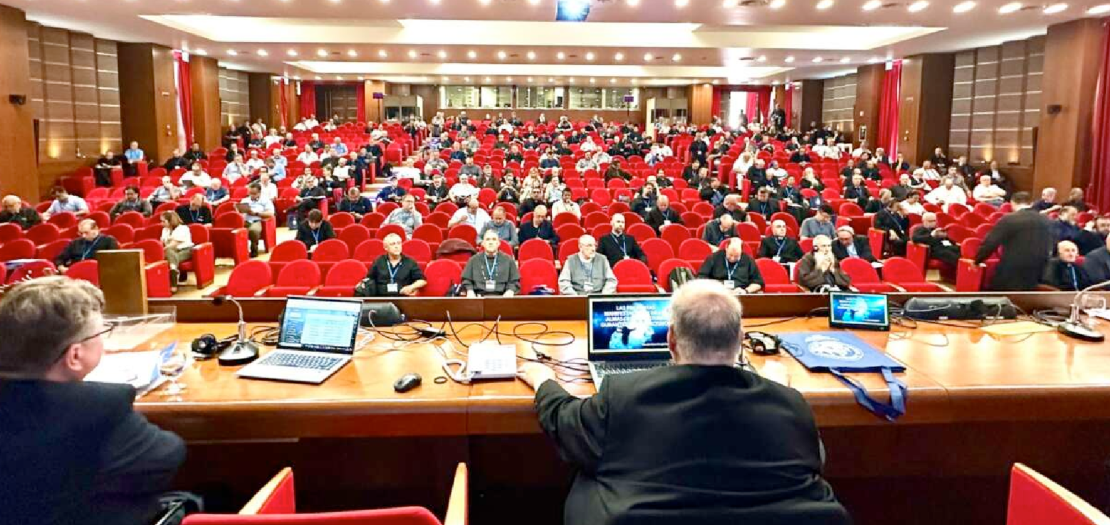
Outside the quiet town of Sacrofano, on the outskirts of Rome, a gathering in the Catholic calendar place this September. More than 300 priests and their assistants, hailing from every continent, converged at the “Fraterna Domus” spiritual house for the fifteenth International Conference of Exorcists. For a week, they prayed, debated, and shared experiences about a ministry that, while often hidden from public view, the Church insists remains vital: the work of the exorcist.
Pope Leo XIV, though not present in person, set the tone with a written message that framed the exorcist’s task as both “liberation and consolation.” His words, read at the opening session, urged priests to walk alongside those tormented by evil with prayer and the invocation of Christ’s presence, so that “through the sacramental of exorcism the Lord may grant victory over Satan.” The papal encouragement was met with gratitude in a field that often finds itself misunderstood or trivialized in wider culture.
The International Association of Exorcists (IAE), founded in the 1990s by the famed Roman priest Gabriele Amorth, has grown remarkably in recent years. With official recognition from the Vatican earlier this year, the association now counts more than a thousand members across 58 countries, from Italy—home to the largest group of 340—to emerging communities in Brazil, Mexico, the United States, and even South Korea. Its president, Monsignor Karel Orlita of Brno, Czech Republic, described the rapid expansion as evidence of the ministry’s enduring relevance, calling it “a concrete sign of the Church’s love for those who suffer.”
Daily liturgies at the conference were led by high-ranking prelates, including Cardinal Arthur Roche and Cardinal Pietro Parolin, the Vatican Secretary of State. Their homilies underlined the theological foundations of exorcism: Christ himself at the center of the rite, the humility required of those who serve, and the reminder that every exorcist operates not in his own name but in the name of the Church.
But the week was not only about prayer. It was also a forum for grappling with the evolving challenges of spiritual warfare in the twenty-first century. Presentations explored discernment in distinguishing demonic affliction from psychological illness, the growing appeal of New Age practices, the dangers of spiritist beliefs in “wandering souls,” and even the role of artificial intelligence in fueling new forms of occultism. Italian criminologist Beatrice Ugolini warned that algorithms and data-harvesting technologies are already being co-opted into modern techniques of divination and necromancy—phenomena she called “a digital mutation of the occult.”
Other speakers took the discussion further afield. A French exorcist, Father Jean-Baptiste Vian, examined voodoo rituals in Haiti, noting their links to subjugation and consecration to spirits—even involving children. Brazilian bishop Rubens Miraglia Zani issued a caution against deceptive manifestations that mimic the souls of the dead, while Sicilian priest Benigno Palilla emphasized the importance of dialogue between science and faith, highlighting the collaborative work of medical professionals and exorcists in Palermo.
The tone of the closing days combined soberness with fraternity. Father Francesco Bamonte, vice president of the IAE, issued a stark warning about the pastoral harm caused when priests dismiss cases as mere parapsychology, leaving suffering people without help. And Father Andrés Esteban López Ruiz from Mexico analyzed how the New Age movement’s relativistic spirituality undermines Christian moral foundations.
Nine years after the death of Amorth, whose name became synonymous with the ministry, the conference confirmed that exorcism remains a living, if complex, dimension of Catholic life. Monsignor Andrés Gabriel Ferrada Moreira, secretary of the Dicastery for Clergy, closed the event with a note of gratitude from the Vatican: thanks for the daily, often unseen service carried out by priests who confront what the Church continues to describe, in its most ancient language, as the presence of the Evil One.
For many of the participants, the days at Sacrofano were less about sensational battles with demons than about reaffirming a vocation rooted in prayer, humility, and discernment. And for the wider Church, the growing ranks of exorcists worldwide signal that, even in a secular age, the ministry Pope Leo XIV has called both liberating and consoling is not disappearing into history—it is adapting, and expanding.


